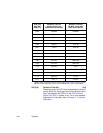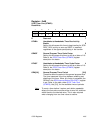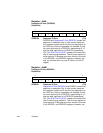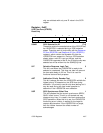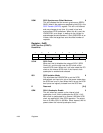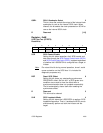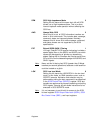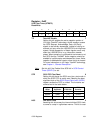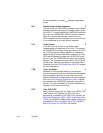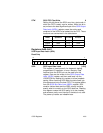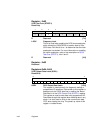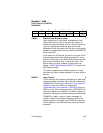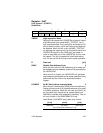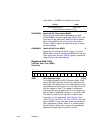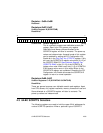4-92 Registers
for test purposes or to lower I
DD
during a power-down
mode.
DSI Disable Single Initiator Response 4
If this bit is set, the LSI53C875A ignores all bus-initiated
selection attempts that employ the single initiator option
from SCSI-1. In order to select the LSI53C875A while this
bit is set, the LSI53C875A’s SCSI ID and the initiator’s
SCSI ID must both be asserted. Assert this bit in
SCSI-2 systems so that a single bit error on the SCSI bus
is not interpreted as a single initiator response.
S16 16-Bit System 3
If this bit is set, all devices in the SCSI system
implementation are assumed to be 16-bit. This causes
the LSI53C875A to always check the parity bit for SCSI
IDs [15:8] during bus-initiated selection or reselection,
assuming parity checking has been enabled. If an 8-bit
SCSI device attempts to select the LSI53C875A while
this bit is set, the LSI53C875A will ignore the selection
attempt. This is because the parity bit for IDs [15:8] will
not be driven. See the description of the Enable Parity
Checking bit in the SCSI Control Zero (SCNTL0) register
for more information.
TTM Timer Test Mode 2
Asserting this bit facilitates testing of the selection
time-out, general purpose, and handshake-to-handshake
timers by greatly reducing all three time-out periods.
Setting this bit starts all three timers and if the respective
bits in the SCSI Interrupt Enable One (SIEN1) register
are asserted, the LSI53C875A generates interrupts at
time-out. This bit is intended for internal manufacturing
diagnosis and should not be used.
CSF Clear SCSI FIFO 1
Setting this bit causes the “full flags” for the SCSI FIFO
to be cleared. This empties the FIFO. This bit is
self-clearing. In addition to the SCSI FIFO pointers, the
SCSI Input Data Latch (SIDL), SCSI Output Data Latch
(SODL), and (SODR, a hidden buffer register which is not
accessible) full bits in the SCSI Status Zero (SSTAT0)
and SCSI Status Two (SSTAT2) are cleared.



